Erika pistol
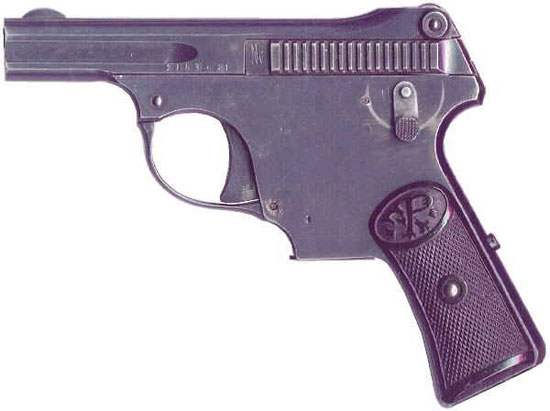
Erika
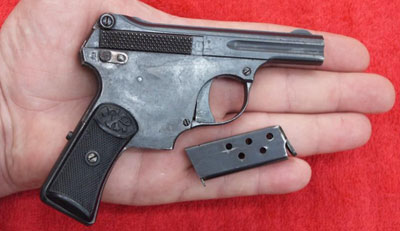
Erika
for size visibility compared to the hand
The Austrian pocket pistol “Erika”, designed for self-defense, was developed by an Austrian weapons engineer from Krems - Franz Pfannl in 1912.
The pistol used a special 4.25 mm (.167) caliber cartridge, which was probably developed in agreement with the Hirtenberg ammunition company. For the same cartridge, the German company Menz at one time established the production of Liliput pistols, which gave rise to the second name of the cartridge - 4.25 Liliput.
The automation of the Erika pistol works due to the free movement of the bolt.
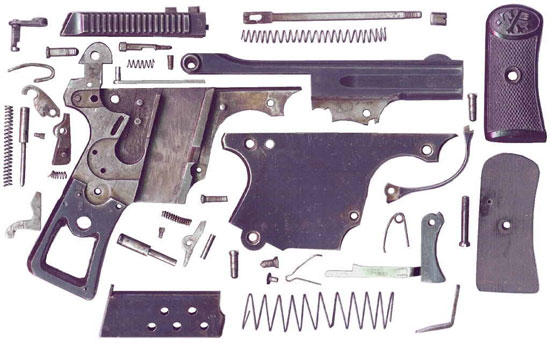
детали пистолета Erika
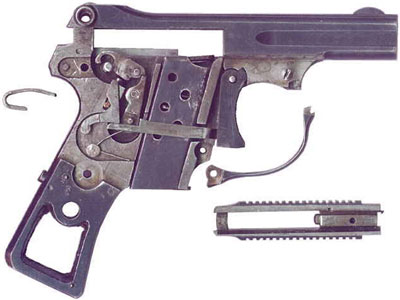
устройство пистолета Erika
Ствольный блок шарнирно соединен с рамкой в ее задней части и крепится штифтом в передней части, а затвор двигается под крышкой лишенной боковин затворной коробки.
Внешние боковые поверхности затвора снабжены насечками, облегчающими взведение пистолета вручную.
Возвратная пружина, помещенная в тоннеле над стволом, соединяется с затвором при помощи направляющего стержня, сцепленного с выступом в верхней части затвора.
Ударно - спусковой механизм куркового типа с полностью скрытым курком. Стрельба из пистолета производится только самовзводом.
Механический предохранитель при включении блокирует курок. Предохранитель может располагаться, как с левой, так и с правой стороны оружия.
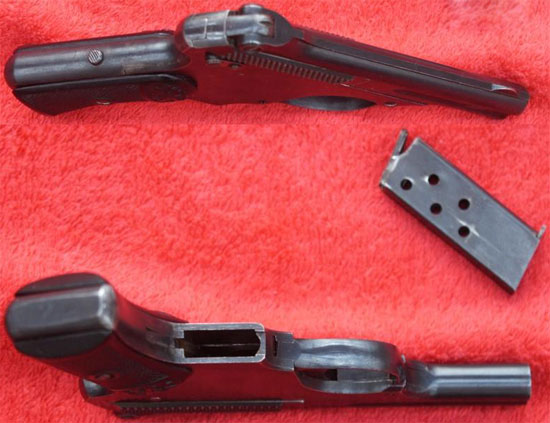
Erika
вид сверху и снизу
The sight of the pistol is open, not adjustable.
On the ebony grip pads, as a rule, there was a monogram of the inventor of the pistol Franz Pfannl - “FP”, or the name of the pistol.
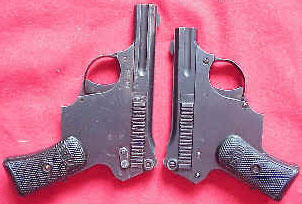
Erika
standard (left) and short (right) model
Erika
Standard Erika
Short
Caliber, mm 4.25x10 4.25x10
Length, mm 135 116
Height, mm 95 85
Width, mm 18 18
Barrel length
, mm 56 42
Weight without
cartridges, kg 0.250 0.220
Magazine,
number of cartridges 5 5
The weapon is fed from a detachable box magazine with a capacity of five rounds. The magazine is inserted between the handle and the opening of the trigger guard. This design looked like a clear regression in relation to modern pocket models for the Erica, but made it possible to make the pistol very flat.
Despite the small caliber, the Erika was a rather bulky pistol for its class of weapons. Its inclined handle was quite far from the barrel, and the placement of the magazine between it and the trigger gave the whole structure a memorable appearance.
The pistol was sold as “the perfect pocket pistol for hunters, hikers, sportsmen, etc.” for 24 shillings, one cartridge cost 8 groschen.
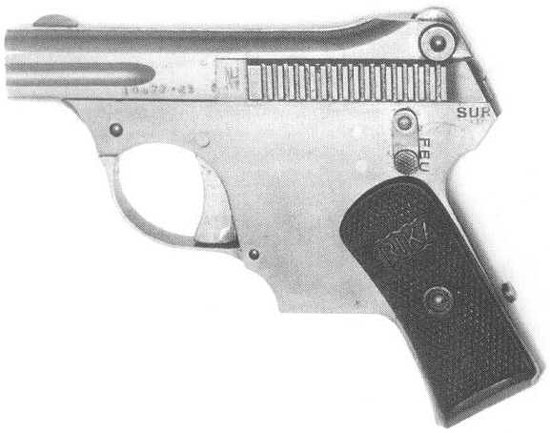
Erika
Short Model
Production of the Erika pistol was discontinued in 1926. In total, about 3500 copies were produced. The low demand for this weapon was explained by the low-power cartridge.
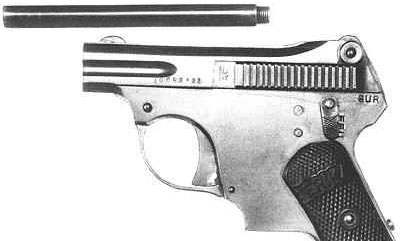
short model of the Erika pistol with an extended barrel
In addition, during the production process, some minor improvements were made to the design of the pistol, related, in particular, to a change in the length of the handle and barrel. And at one time, a second model of the Erika pistol was produced, which was shorter than the standard one and had a shorter grip. The short model also had a variation with a barrel lengthened to 105 mm, while the total length of the pistol was 180 mm.
Subsequently, Franz Pfannl apparently sold the license for his invention to Georg Graebner from Rehberg, who produced a similar in design, albeit slightly modernized, Kolibri pistol. By counter-agreement with Graebner, Pfannell also traded in Kolibri, since on the cheeks of the grip of some samples of this model, as on most copies of the Erika pistol, there is a Pfannel monogram - FP.
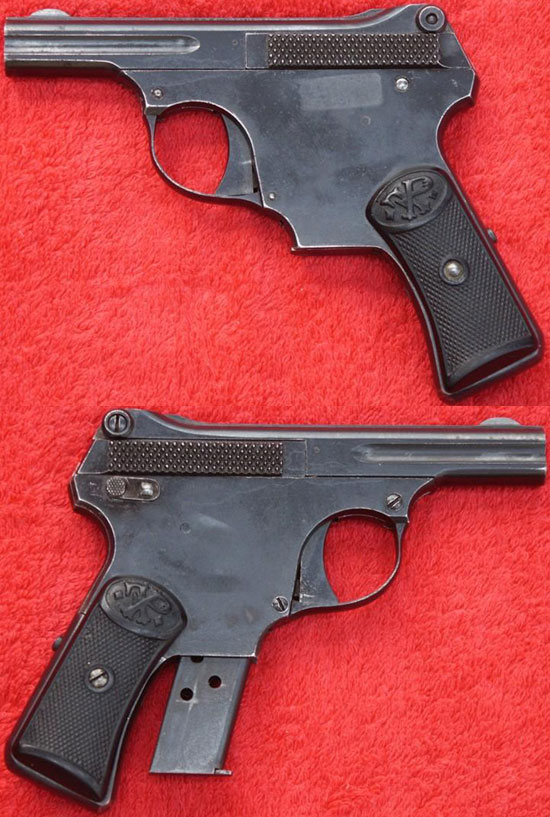
Erika
